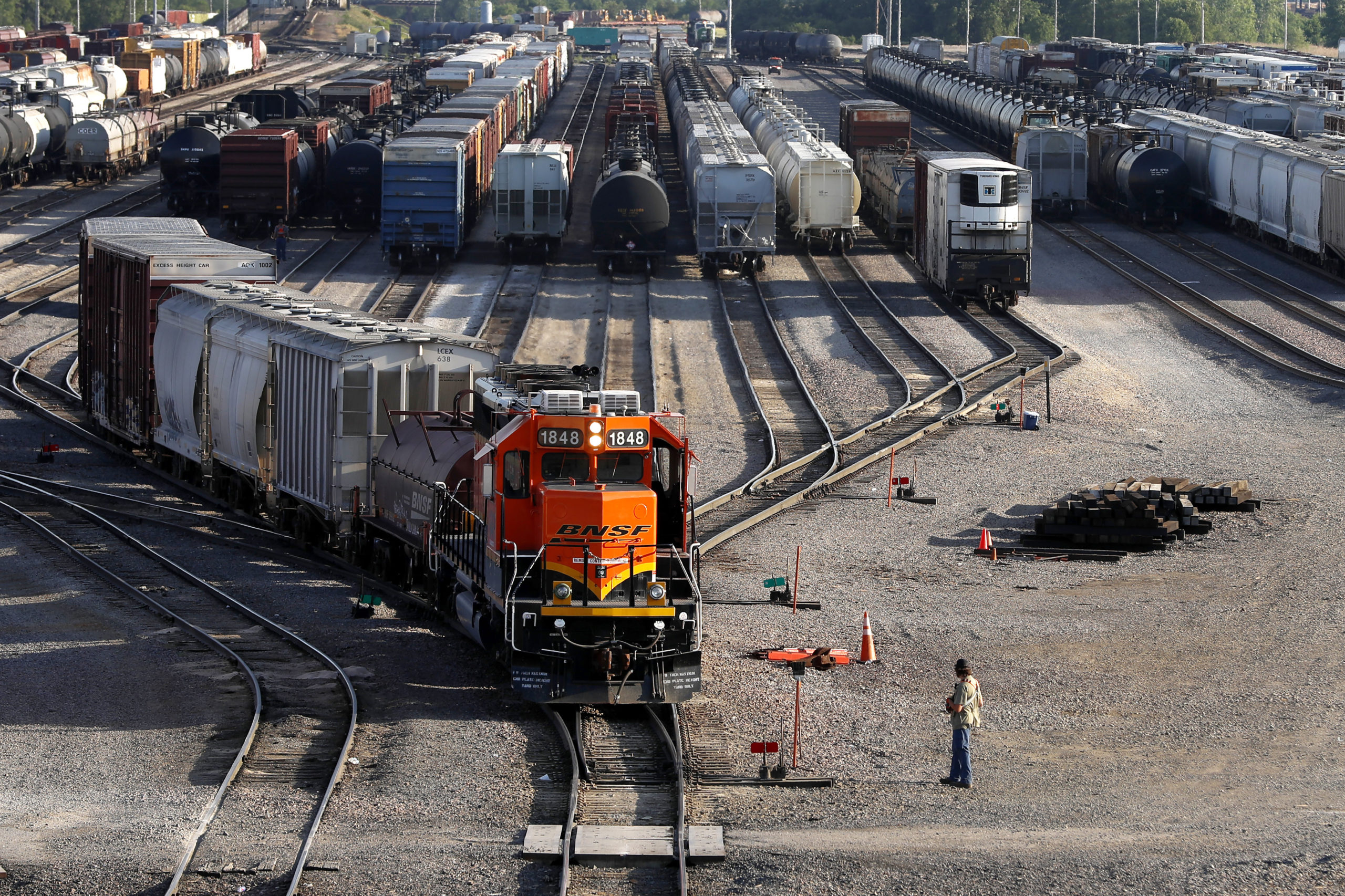OMAHA, Neb. (AP) — The special board appointed by President Joe Biden to intervene in stalled railroad contract talks suggested Tuesday that 115,000 rail workers should get 24% raises and thousands of dollars in bonuses as part of a new agreement to avert a strike.
Railroads and unions will use those recommendations as the basis for a new round of negotiations over the next month. It remains to be seen, however, whether railroads will agree to the higher wages or find ways to address union concerns about working conditions.
If the two sides can’t agree on a new deal by mid September, federal law would allow a strike or lockout. But Congress is likely to intervene before then to keep the supply chain moving.
A railroad strike could devastate businesses that rely on Union Pacific, BNSF, Norfolk Southern, CSX and other major freight railroads to deliver raw materials and ship their products. In past national rail labor disputes, lawmakers have voted to impose terms on the railroads before workers could strike.
A White House official said Biden is optimistic the report will provide a good framework for successful negotiations because avoiding a rail shutdown is in the nation’s interests.
The report was distributed to the parties Tuesday, and The Associated Press obtained a copy of it, but the railroads and the unions didn’t immediately comment on any details.
The railroads entered the Presidential Emergency Board process a month ago far apart from the 12 unions taking part. The unions have been seeking a 31% raise over the five years of the deal while the railroads were offering only 17% in compounded raises. The unions also don’t want to see the cost of their health care coverage go up much in a new contract.
According the report, the board is recommending 24% wage increases and $5,000 in bonus payments over the life of the contract while adding one additional paid day off each year. The report also recommends keeping the same basic health insurance plan but having employees take on a larger share of the costs through higher monthly premiums.
The board says it believes workers are entitled to higher wages than the railroads have proposed because of current high inflation, tight labor markets and railroads’ strong profitability. The report also says that railroad work has become more demanding in recent years because of the pandemic and cost-cutting at the railroads.
Railroad workers have gone without a raise since 2019 while the contract talks drug on. The workers expect to be compensated after staying on the job throughout the pandemic and enduring extensive job cuts in recent years. And strikes have become more common over the last two years in a variety of industries because unions generally feel empowered to ask for more.
The major freight railroads have eliminated nearly one-third of their jobs over the past six years as they overhauled their operations to run fewer, longer trains that need fewer locomotives and employees. Unions say the railroads expect more from the workers who remain, and that some railroads’ tightened attendance policies make it hard to take time off because of all the job cuts.
In addition to disagreements over wages and benefits, unions have staunchly opposed a proposal from the railroads to cut the number of workers in a locomotive from two to one. A new proposed federal rule that would require two-person crews in most instances should make it harder for railroads to reduce crew sizes, but the railroads have been pressing for the change for several years. The unions argue that keeping two people on the crews isn’t just about preserving jobs, but also ensuring safety.
Reaching a new agreement would likely make it easier for railroads to hire new employees, which they acknowledge they need to do to improve service and cut down on the delays that have plagued freight shipments this year. The major freight railroads have all said they want to hire hundreds more workers, but worker shortages are making that difficult.

